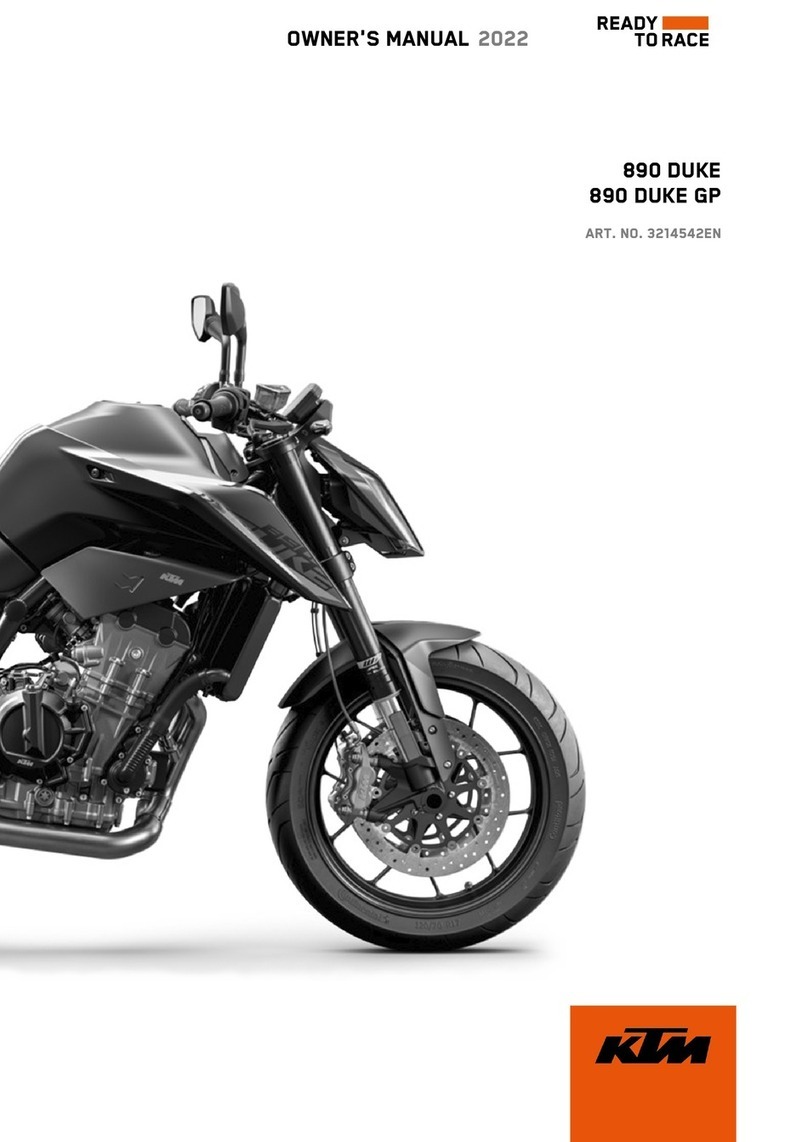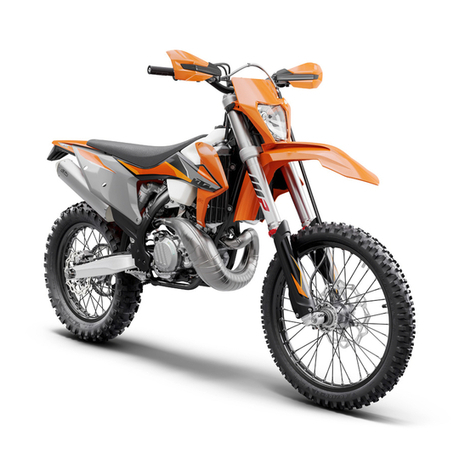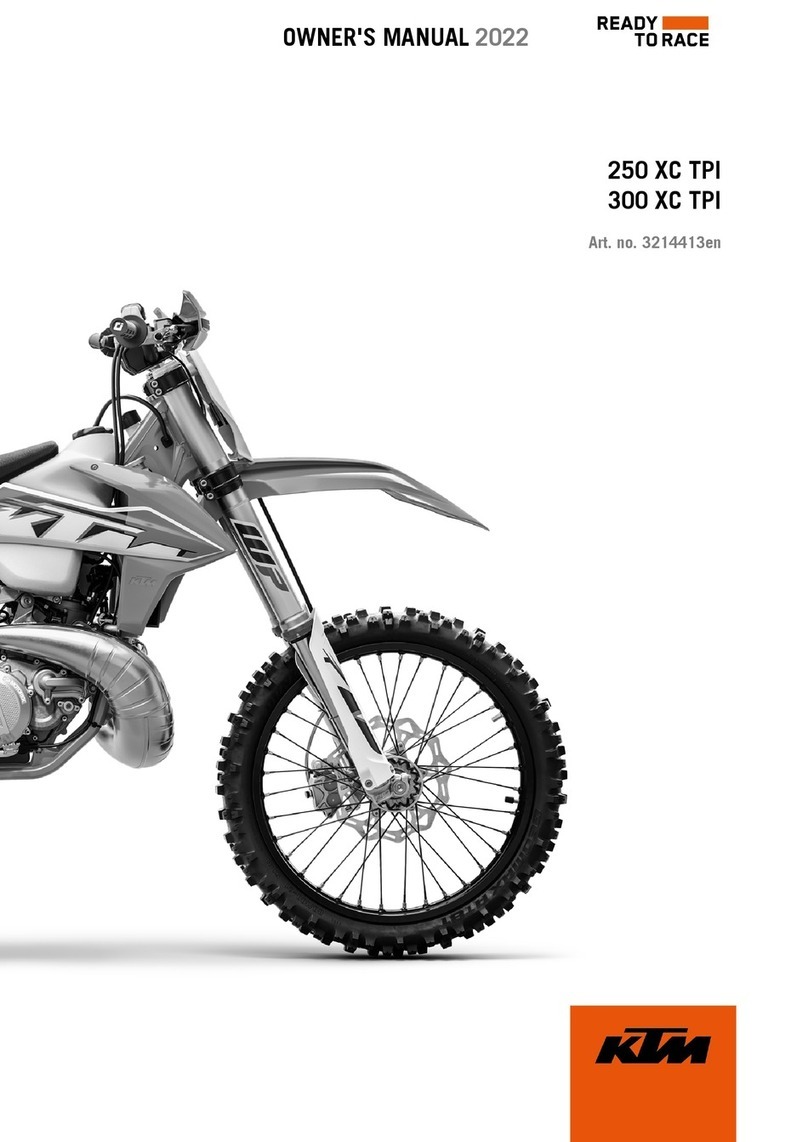KTM Freeride 350 EU Manual
Other KTM Motorcycle manuals
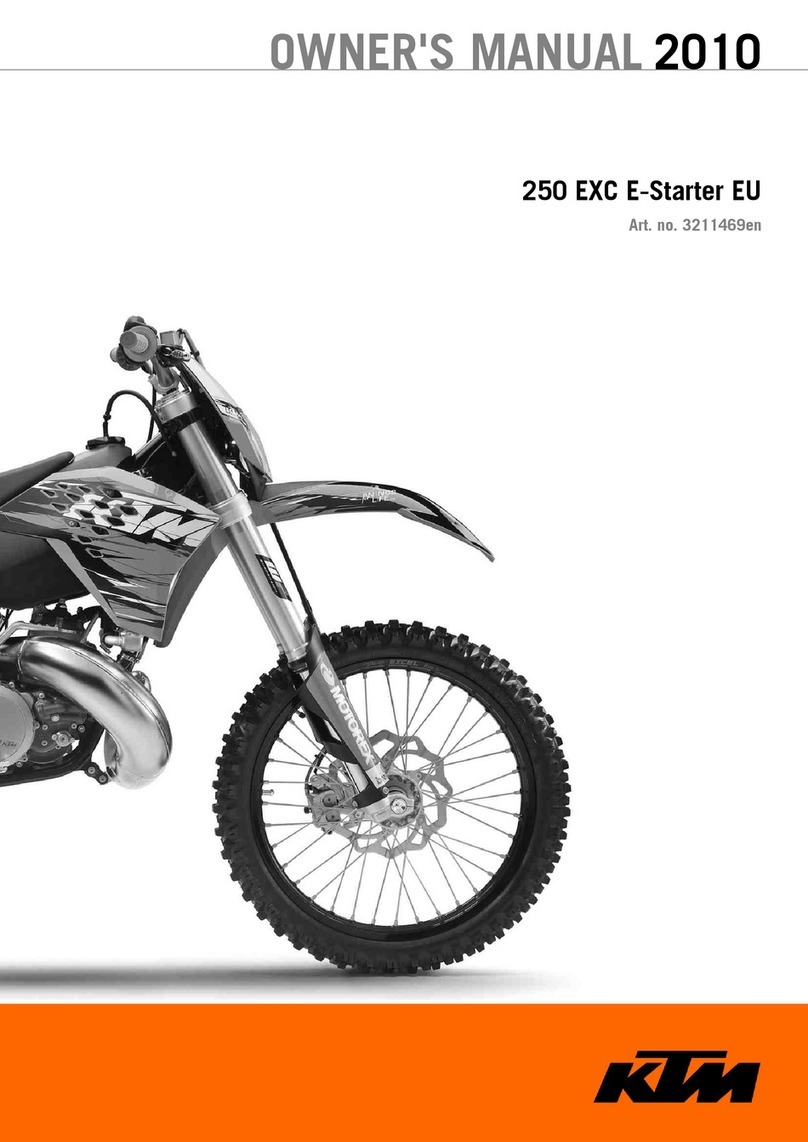
KTM
KTM 250 EXC E-Starter EU 2010 User manual

KTM
KTM 50 SX 2019 User manual
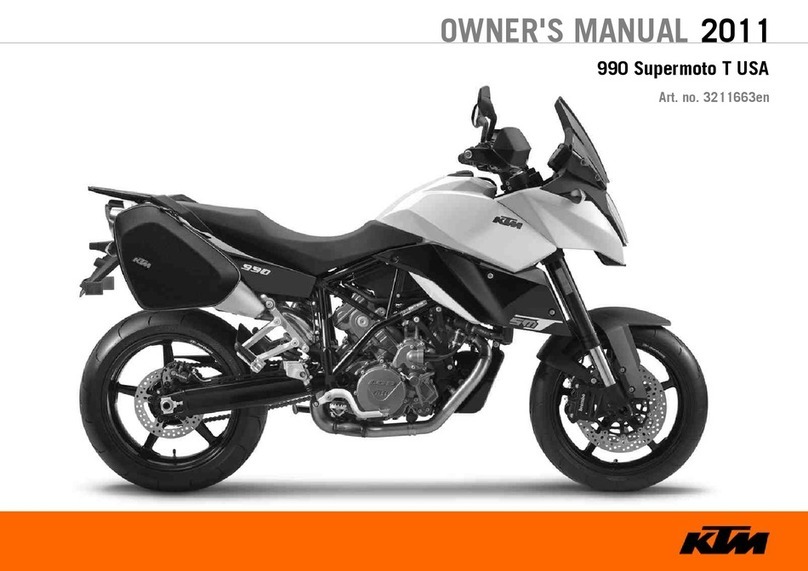
KTM
KTM 2011 990 Supermoto T USA User manual

KTM
KTM 400 SX RACING 2000 User guide
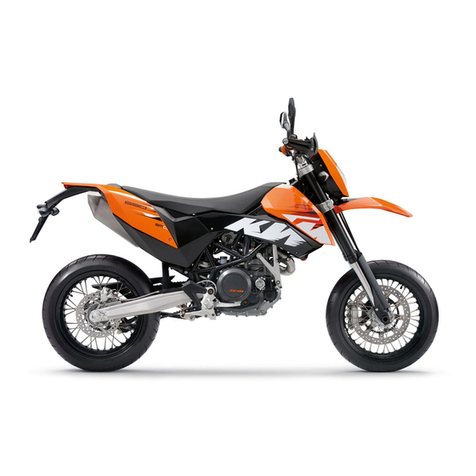
KTM
KTM Chassis 690 SMC User manual

KTM
KTM 790 Adventure 2019 User manual
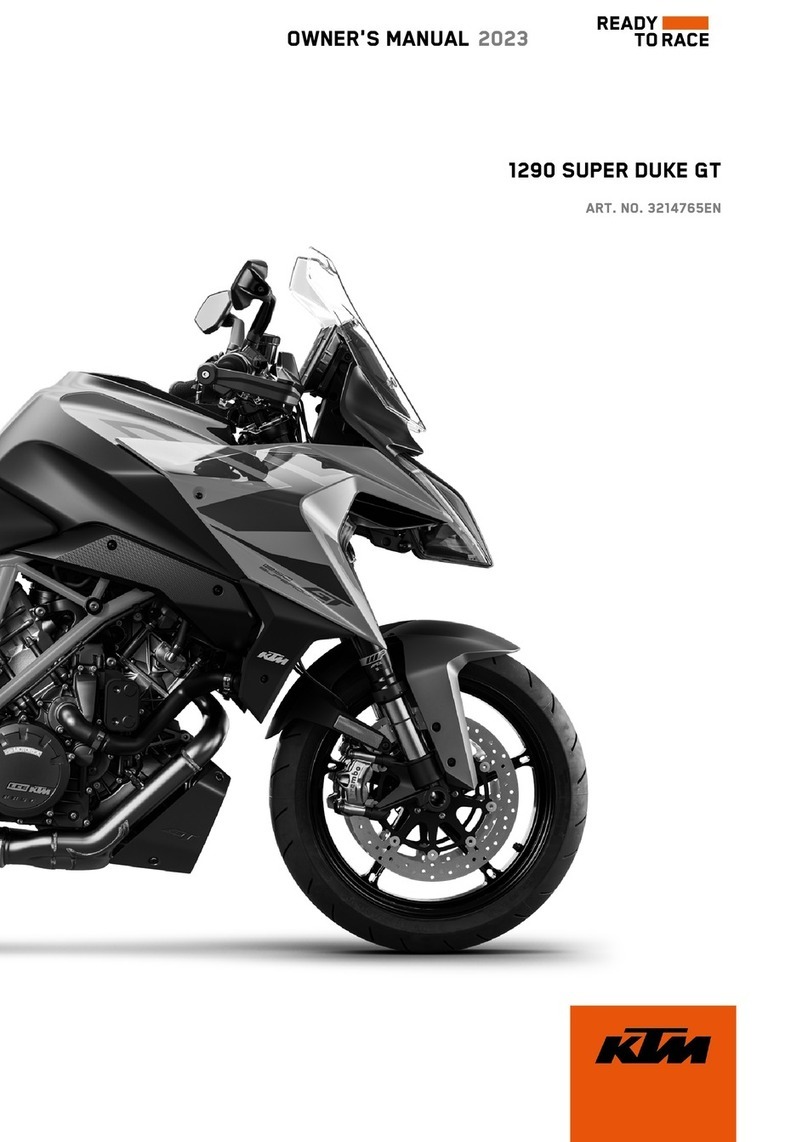
KTM
KTM 1290 SUPER DUKE GT 2023 User manual

KTM
KTM 500 EXC-F 2018 User manual
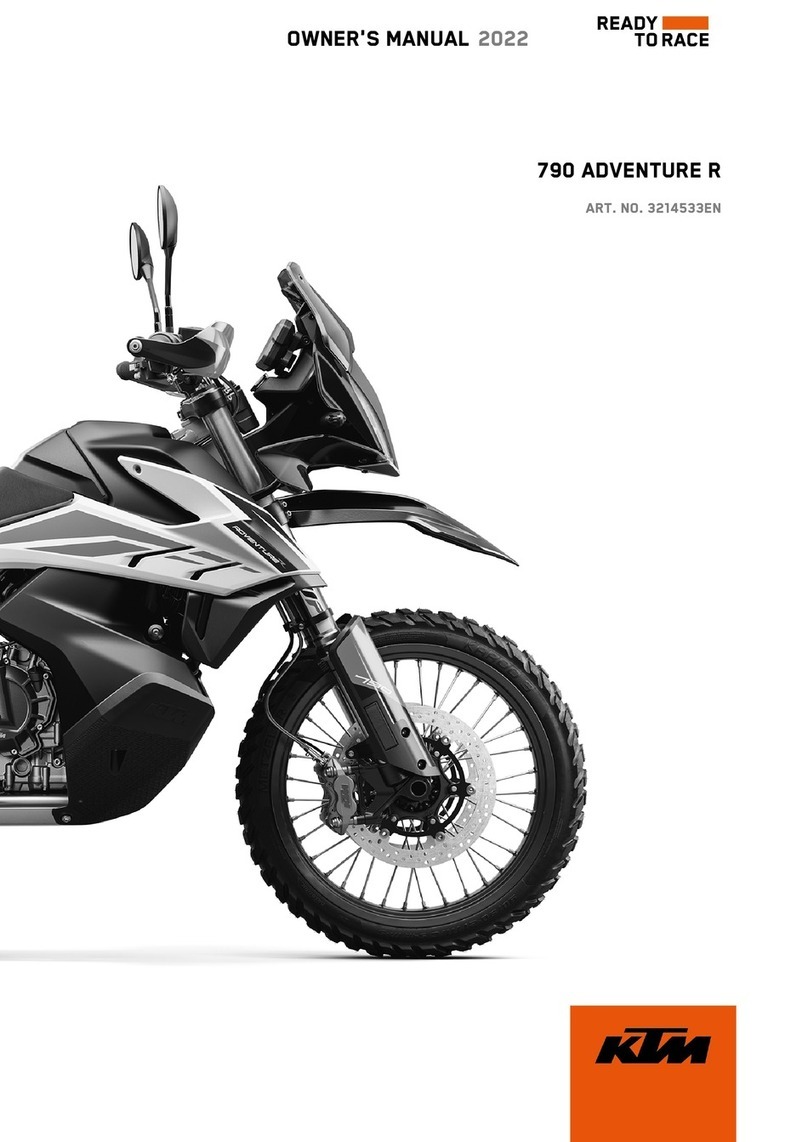
KTM
KTM 790 ADVENTURE R 2022 User manual

KTM
KTM 300 EXC ERZBERGRODEO 2023 User manual
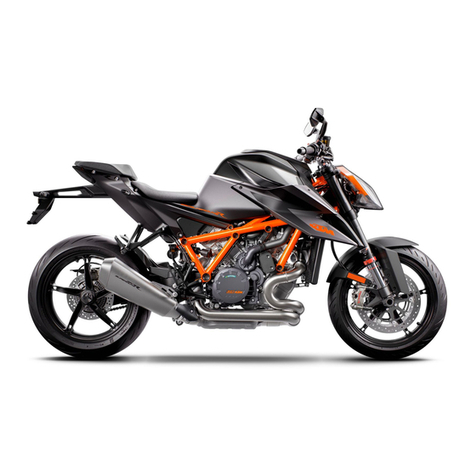
KTM
KTM 1290 Super Duke R US 2020 User manual
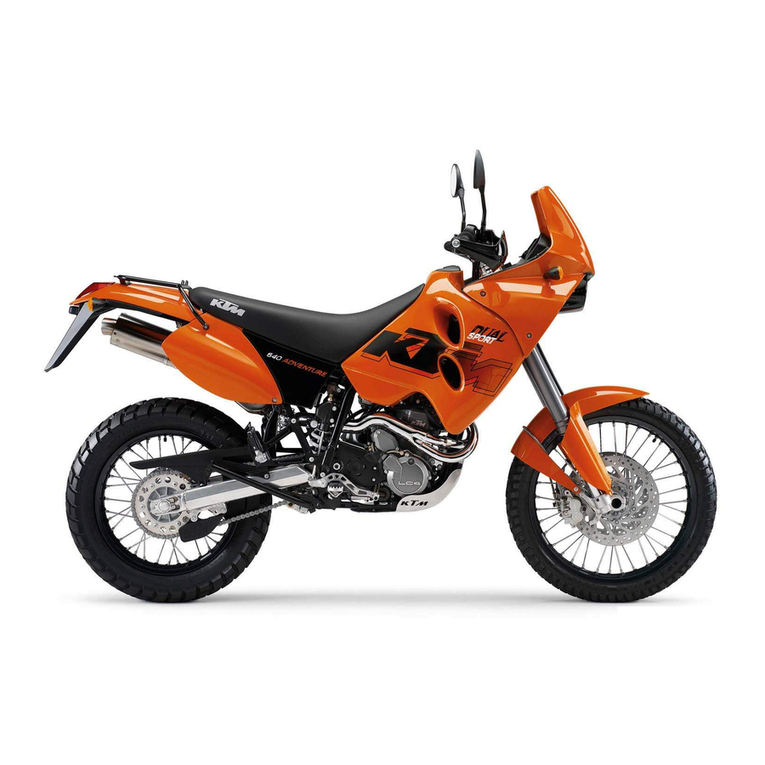
KTM
KTM ADVENTURE R 640 Guide
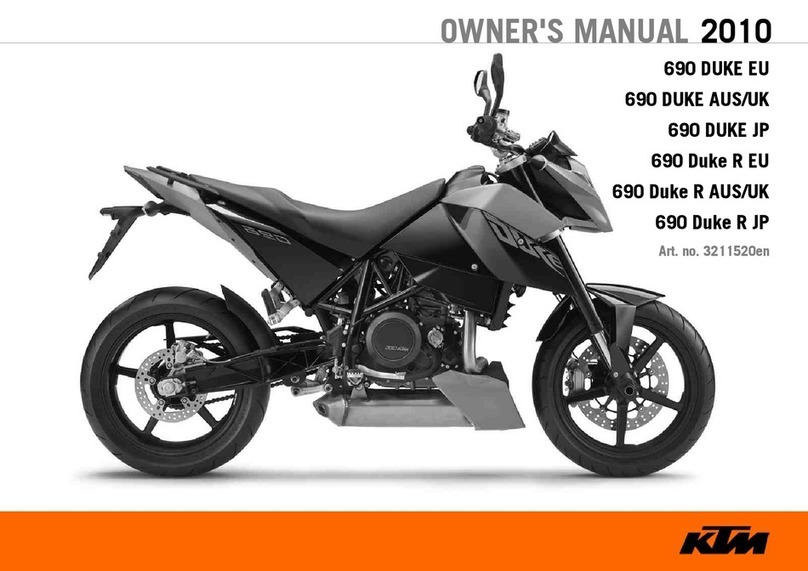
KTM
KTM 690 DUKE R EU User manual
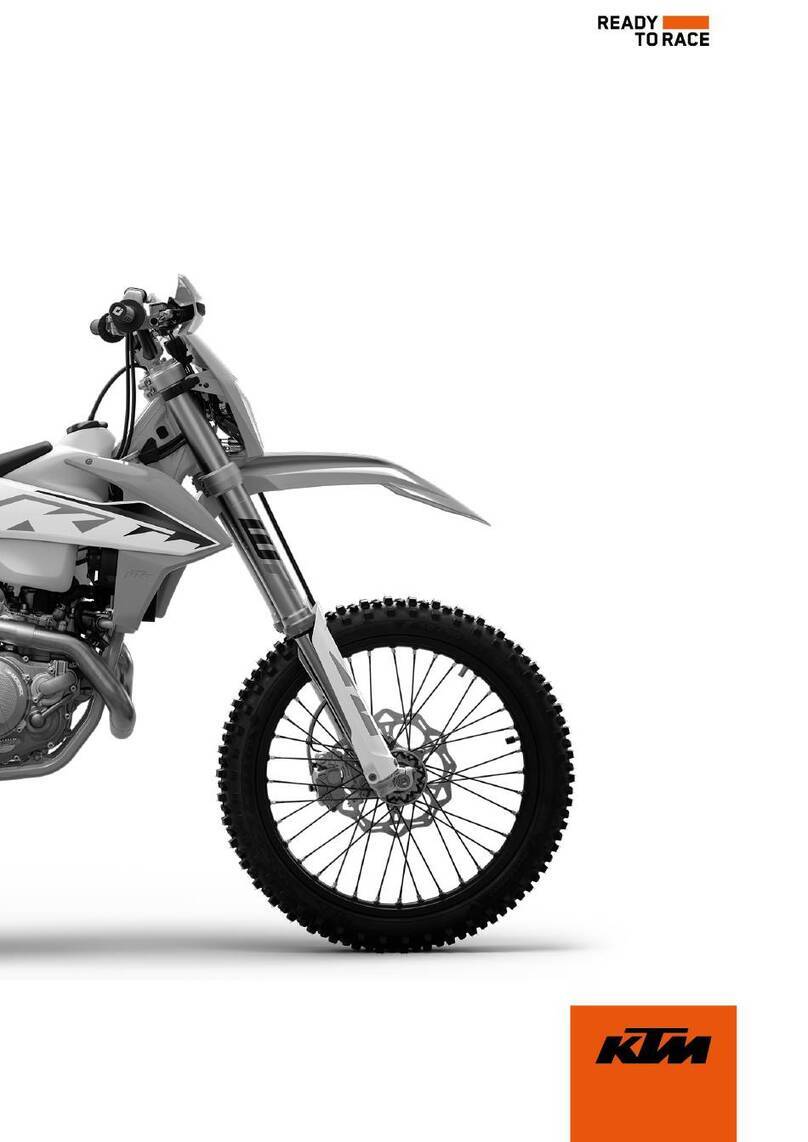
KTM
KTM 450 EXC-F SIX DAYS 2023 Manual
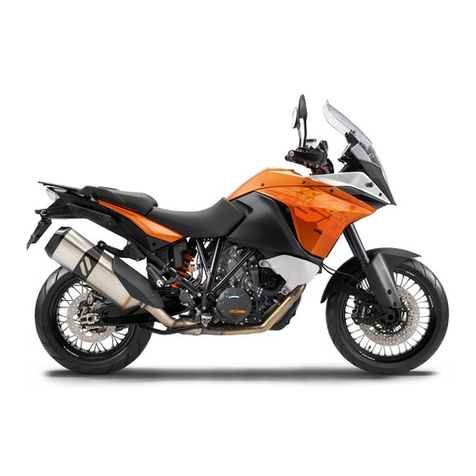
KTM
KTM 1190 Adventure R EU User manual
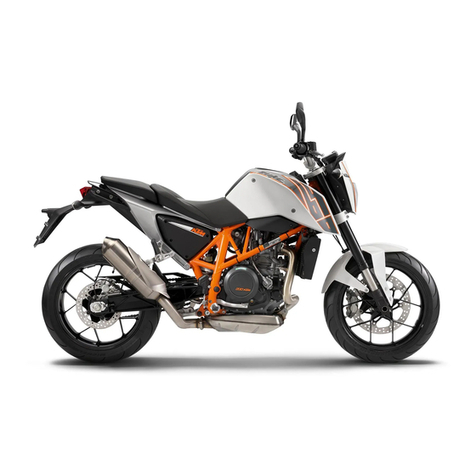
KTM
KTM 690 Duke USA User manual
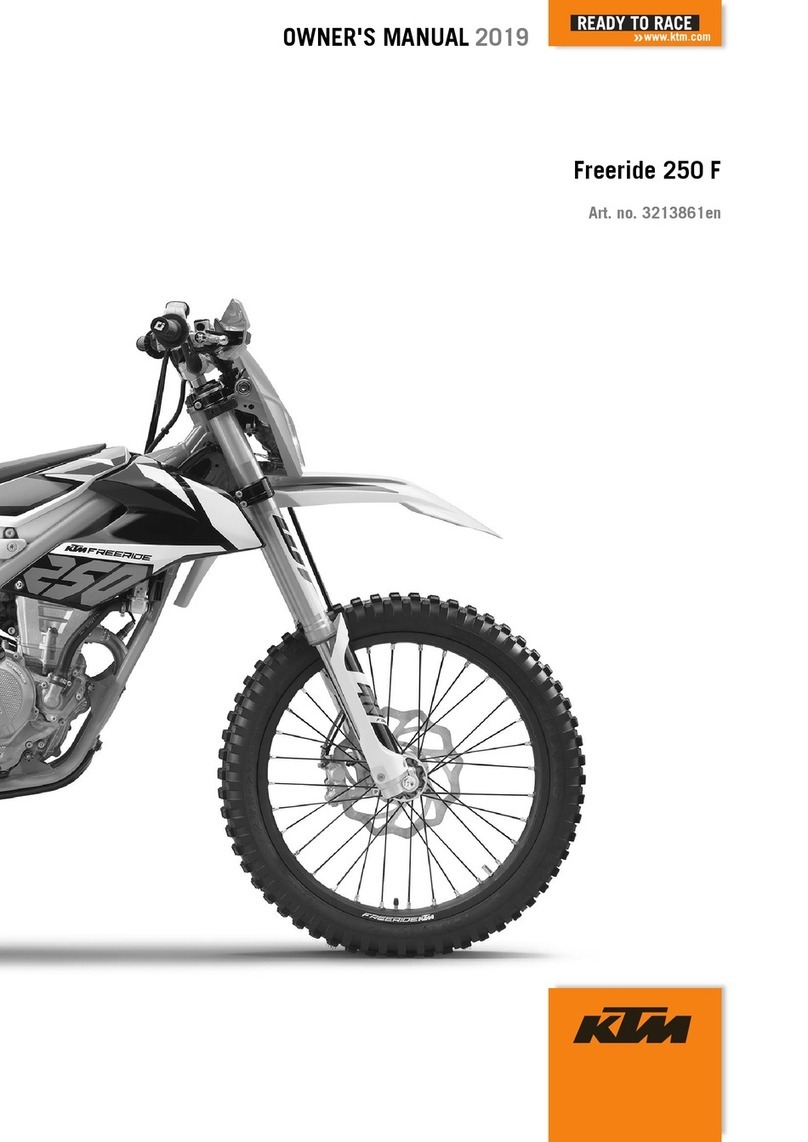
KTM
KTM F8103S4 User manual
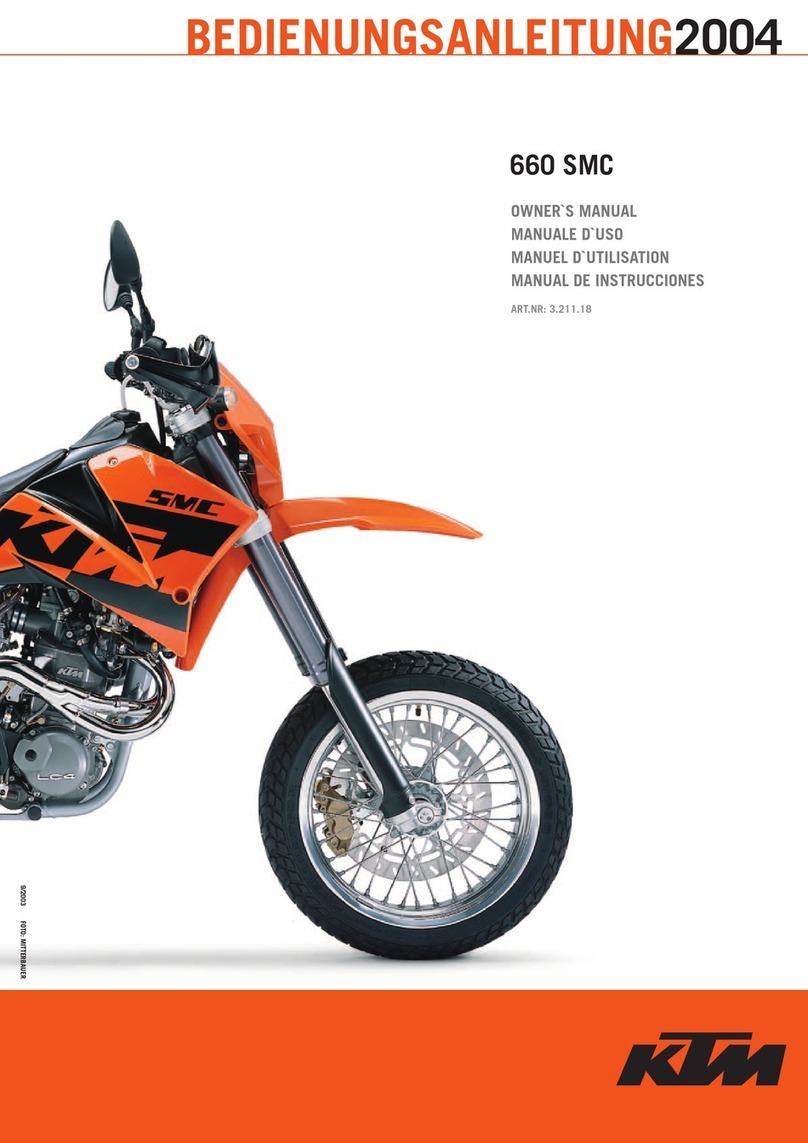
KTM
KTM 2004 660 SMC User manual
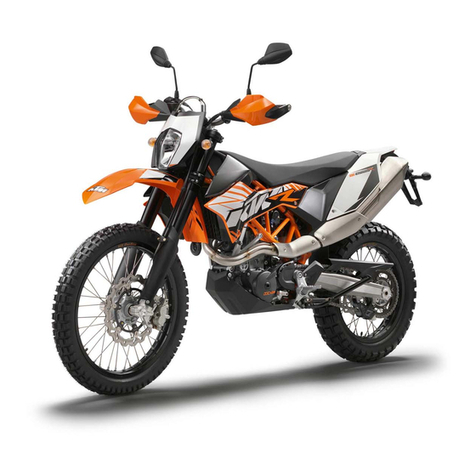
KTM
KTM 690 Enduro R EU 2013 Operating instructions

KTM
KTM 350 EXC-F AUS 2012 Manual
Popular Motorcycle manuals by other brands

MV Agusta
MV Agusta Brutale 675 Workshop manual

APRILIA
APRILIA RSV MILLE - PART 1 1999 User manual content

Royal Enfield
Royal Enfield Himalayan 2018 owner's manual

SSR Motorsports
SSR Motorsports Lazer5 owner's manual

MOTO GUZZI
MOTO GUZZI 2005 Griso 1100 Use and maintenance book

Beta Motorcycles
Beta Motorcycles XTRAINER 250 2T EUROPA 2022 manual
